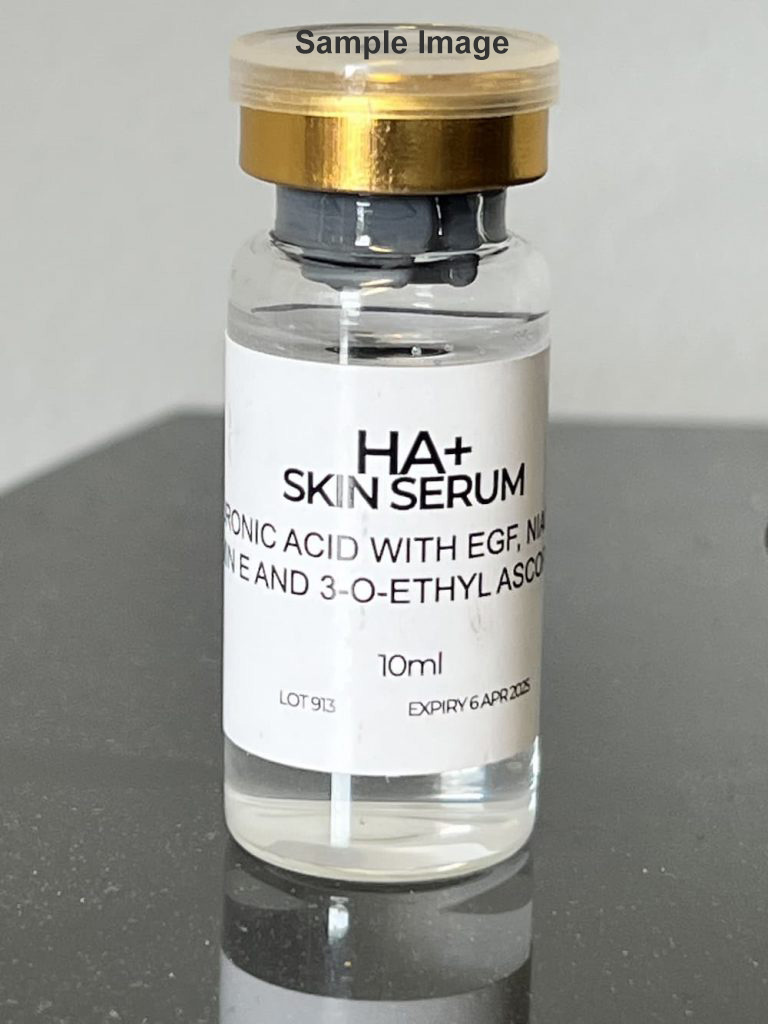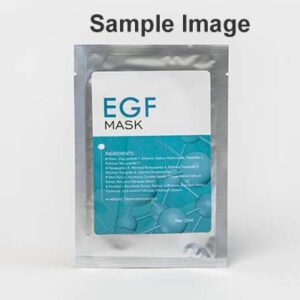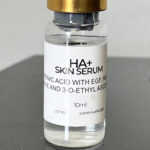Not all serums can be used together with microneedling because some may potentially irritate the skin despite their moisturizing benefits. Unlike these serums, the Hyaluronic Acid Skin Serum not only acts as a moisturizer and a skin rejuvenator, but it can also boost the healing process of the skin.
Our Hyaluronic Acid Skin Serum is completely safe for use with a formula free of harmful preservatives and fragrances. With a focus on the key ingredient, naturally-occurring hyaluronic acid, our Hyaluronic Acid Skin Serum provides the most effective experience possible with your treatments.
What’s more, our Hyaluronic Acid Skin Serum also features powerful ingredients that promote optimal skin benefits. These include the following:
The epidermal growth factor is capable of promoting the growth and proliferation of epithelial cells, making it perfect for skin rejuvenation and restructuring. It’s capable of promoting the release of cytokines in mesenchymal and epithelial cells, making it excellent for wound repair.
Similarly, EGF may have anti-aging properties because of its ability to stimulate the production of collagen and to also mediate the interaction between fibroblasts and keratinocytes to facilitate better skin elasticity.
Niacinamide is a form of vitamin B3 capable of promoting healthier skin cells through the following effects:
- Anti-inflammatory – Niacinamide is capable of mediating different processes in inflammation, such as leukocyte chemotaxis or the movement of neutrophils and macrophages to the site of inflammation, the release of lysosomal enzymes, and the transformation of lymphocytes.
- Antipruritic – The antipruritic effects or the ability of niacinamide to reduce itchiness is due to its ability to promote the barrier-protective effect of the stratum corneum and to reduce the release of antihistamine by the mast cells.
- Antimicrobial – Research shows that niacinamide is capable of preventing the growth of Mycobacterium tuberculosis, HIV, and certain fungi.
- Photoprotective – Niacinamide is capable of preventing the promotion of the production of cancer cells and the immunosuppression brought by ultraviolet light.
- Whitening – Niacinamide inhibits the transfer of melanosomes from melanocytes to keratinocytes, meaning it’s capable of stopping the color pigments from being transferred from the pigment cells (melanocytes) to skin cells (keratinocytes).
Vitamin E or tocopherol is a fat-soluble vitamin, with alpha-tocopherol being abundant and well-maintained in human plasma.
With its antioxidant and antiaging properties, Vitamin E protects the cellular components from oxidative damage brought by the peroxidation of the fatty acid component of the cell membrane by the free radicals.
Another notable thing about vitamin E is its anti-inflammatory properties, with its ability to prevent the aggregation of platelets, the sticking of monocytes to inflammation sites, and the proliferation of cells.
The 3-O-ethyl ascorbic acid is a stable, non-irritating derivative of vitamin C with a multitude of benefits for the skin.
Studies have shown that the 3-O-ethyl ascorbic acid derivative of vitamin C is capable of whitening by inhibiting the tyrosinase activity of the skin, thus complementing the whitening effects of niacinamide due to the difference in their mechanism of action.
3-O-ethyl ascorbic acid has anti-aging properties brought by its antioxidant and collagen-boosting properties. Its antioxidant properties are brought by its ability to scavenge free radicals. Consistent with the activity of vitamin C, 3-O-ethyl ascorbic acid is also capable of promoting the production of collagen.





